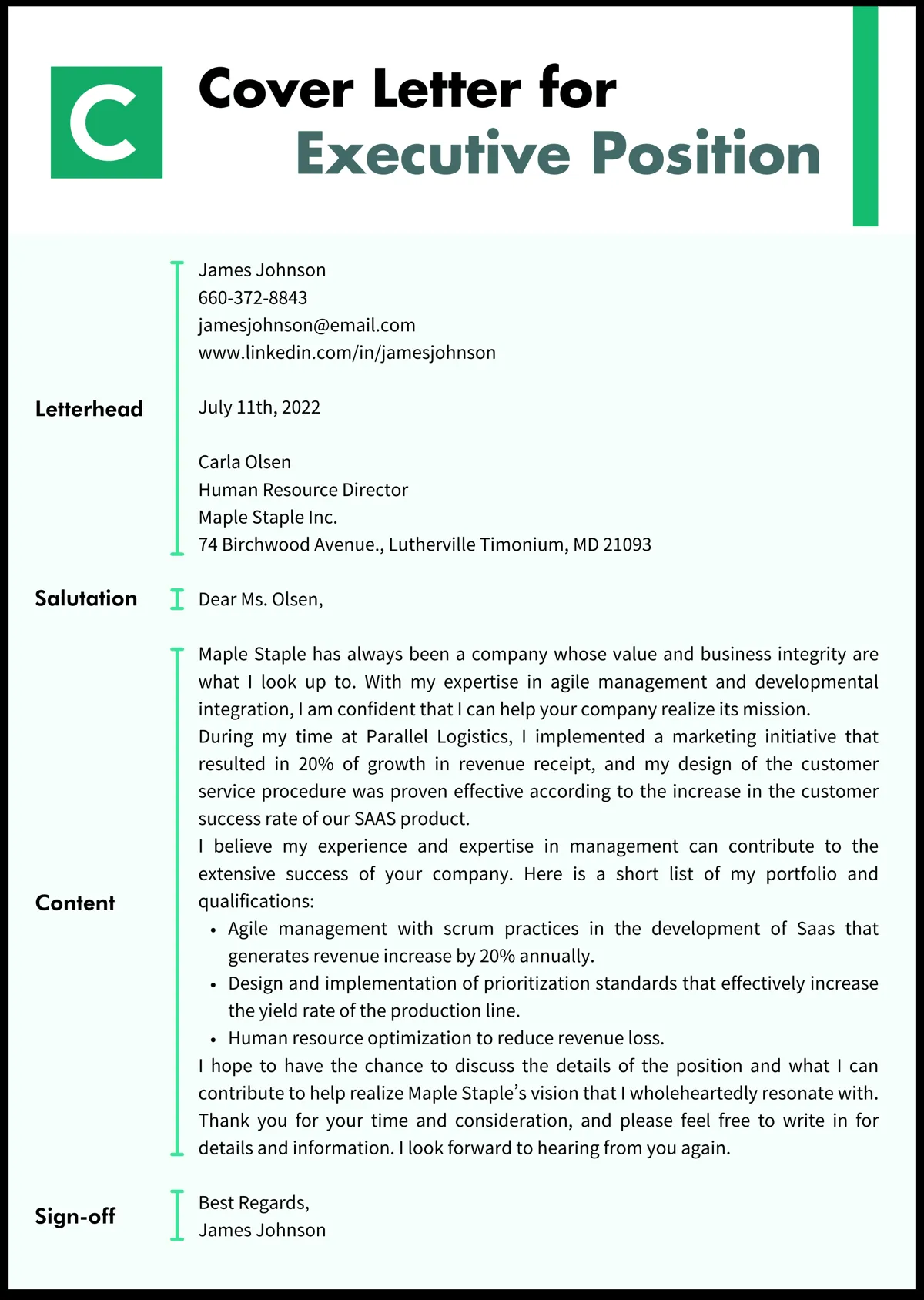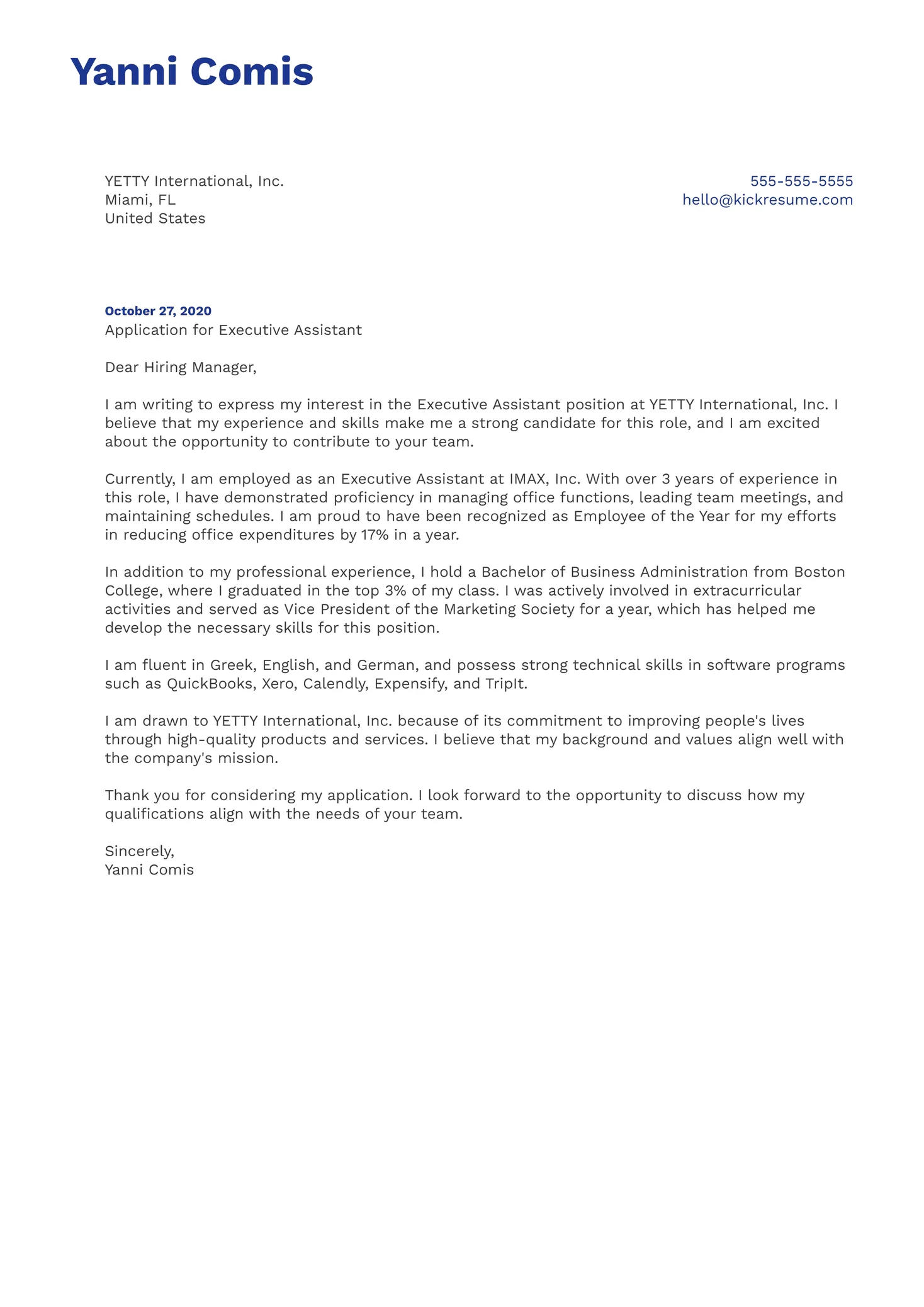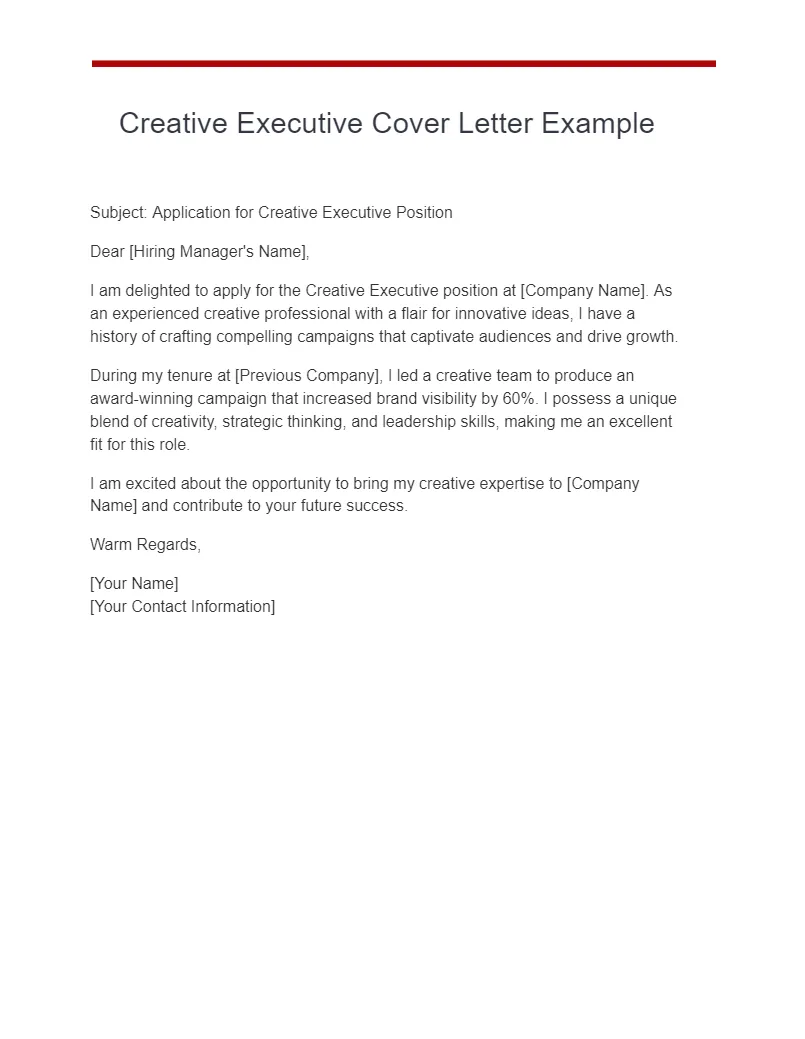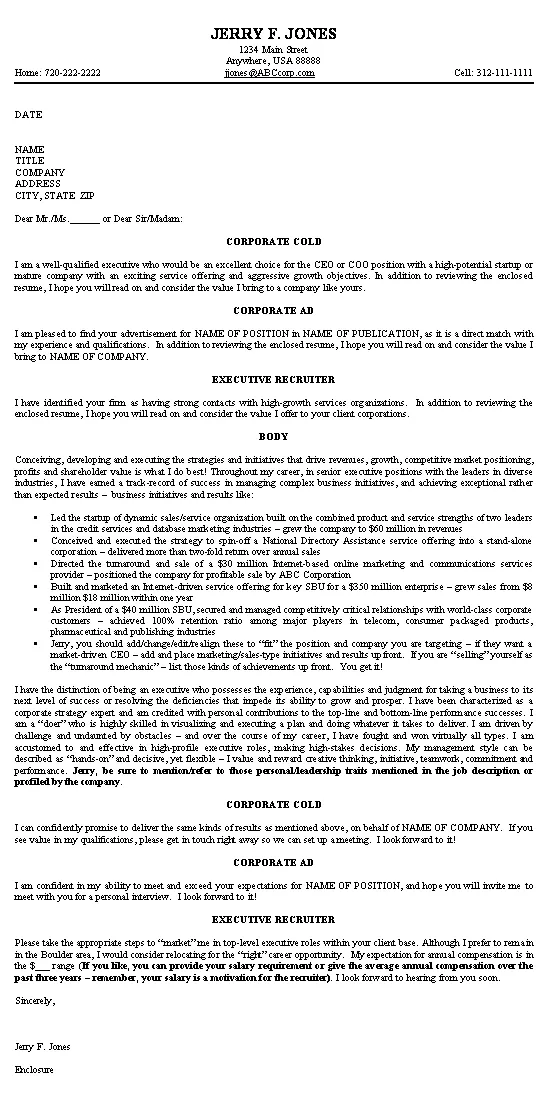Cover Letter Example Executive What Makes It Great
An executive cover letter is more than just a document; it’s a strategic marketing tool. It’s your first introduction to a potential employer, offering a glimpse into your professional experience, skills, and aspirations. Crafting a compelling cover letter is crucial for executive-level positions where competition is fierce. It’s your chance to immediately differentiate yourself from the numerous other applicants, demonstrating your understanding of the role and your ability to deliver results. A well-written cover letter must capture the attention of the hiring manager, highlight your most relevant accomplishments, and clearly articulate your value proposition.
Understand the Purpose of an Executive Cover Letter
The primary function of an executive cover letter is to complement your resume by providing a narrative that contextualizes your career. It explains why you’re the ideal candidate for the specific role. Unlike a resume, which provides a factual overview, a cover letter allows you to elaborate on your achievements, showcasing your personality, leadership style, and strategic thinking abilities. This is where you can convey your passion for the industry, the company, and the specific opportunity. Your cover letter needs to persuade the reader to review your resume more closely and to invite you for an interview.
Target the Right Audience

Before you even begin writing, identify your target audience. Is it the CEO, a hiring manager, or a human resources representative? Researching the person who will be reading your cover letter allows you to tailor the language, tone, and content to resonate with them. Tailoring your letter shows that you have taken the time to understand the organization’s values and the specific requirements of the position. This effort demonstrates professionalism and genuine interest. In a highly competitive market, this step can often provide an edge.
Know Your Audience Research the Company and Hiring Manager
Thorough research is paramount. Visit the company’s website, browse their social media profiles, and read recent news articles or press releases. Understand their mission, values, and recent accomplishments. If possible, try to identify the hiring manager. Look at their LinkedIn profile or any other publicly available information to learn about their background, experience, and interests. This will give you a better sense of the specific requirements of the role and the culture of the company. Personalize your letter by referencing specific company initiatives, values, or challenges to demonstrate that you have taken the time to understand them.
Key Components of a High-Impact Executive Cover Letter
An effective executive cover letter consists of several critical components that work in concert to make a strong impression. The layout and structure should be clean, concise, and professional. The content must be tailored to the specific job and highlight relevant accomplishments. Each section plays a vital role in telling your professional story and showing why you are a perfect fit for the opportunity. Mastering these essential elements can significantly boost your chances of landing an interview.
Header Contact Information and Date

Start with a professional header that includes your full name, professional title (if applicable), phone number, email address, and LinkedIn profile URL. Ensure that your contact information is up-to-date and easily accessible. Also, include the date, followed by the recipient’s name, title, and company address. This establishes professionalism and ensures the hiring manager has your contact information readily available. Ensure the header is clean, well-formatted, and consistent with your resume.
Personalized Salutation
Avoid generic greetings like “To Whom It May Concern.” If possible, address the hiring manager by name. This shows that you have taken the time to research the organization and demonstrates your attention to detail. If the hiring manager’s name isn’t available, use a professional alternative like “Dear Hiring Manager” or “Dear [Department Name] Team.” The salutation sets the tone for the entire letter, so it should always be personalized to create a connection and maintain a professional tone.
Strong Opening Statement Grab Attention Immediately
The opening paragraph is your chance to make a memorable first impression. Start with a concise, engaging statement that immediately grabs the reader’s attention. Highlight your most significant accomplishment, a relevant skill, or a clear understanding of the company’s needs. Avoid generic introductions. Instead, provide a compelling reason for the hiring manager to keep reading. Briefly state the position you are applying for and mention where you saw the job posting.
Body Paragraphs Showcasing Achievements and Skills

The body of your cover letter is where you showcase your skills, experiences, and achievements. Focus on the achievements most relevant to the job requirements. Provide specific examples of how you have made a significant impact in previous roles. Use the STAR method (Situation, Task, Action, Result) to structure your examples. Start by describing the situation, the task you were assigned, the actions you took, and the quantifiable results you achieved. The best executive cover letters focus on accomplishments, not just responsibilities.
Quantifiable Achievements Use Numbers and Data
When describing your achievements, use quantifiable data to illustrate your impact. This will demonstrate the value you bring to the company. Instead of saying you “improved sales,” state that you “increased sales by 20% in one year.” Include specific numbers, percentages, and dollar amounts whenever possible. This objective evidence makes your claims more credible and shows the hiring manager the tangible results you have delivered. This data helps hiring managers quickly assess the value you can bring to their organization, making it one of the most vital parts of your cover letter.
Tailoring Your Skills to the Job Description
Carefully review the job description and identify the key skills and qualifications the company is seeking. Then, tailor your cover letter to match those requirements. Highlight your relevant skills and experiences, providing concrete examples of how you have demonstrated these competencies in the past. This demonstrates that you understand the job requirements and have the skills to succeed in the role. It also shows the employer that you’ve put in the effort to ensure this is a good match for both parties.
Closing Statement and Call to Action

Conclude your cover letter with a strong closing statement. Reiterate your interest in the position and summarize why you are the ideal candidate. Express your enthusiasm for the opportunity and restate how your qualifications align with the company’s needs. Finish with a clear call to action. State your availability for an interview and thank the hiring manager for their time and consideration. End with a professional closing, such as “Sincerely,” or “Best regards,” followed by your full name.
Proofreading and Formatting
Proofreading and formatting are critical steps that should not be overlooked. A polished cover letter shows that you pay attention to detail and have professional standards. Errors and poorly formatted text create a negative impression and can disqualify you from consideration. Prioritize the formatting and always, always proofread.
Formatting Best Practices
Use a clear, professional font like Arial, Calibri, or Times New Roman, with a font size of 11 or 12 points. Maintain consistent formatting throughout the document, including margins and spacing. Ensure the letter is well-structured and easy to read. Use bullet points for lists of skills or accomplishments if necessary, but keep the overall formatting clean and uncluttered. Consider using white space to break up large blocks of text and make your letter more visually appealing.
Proofreading Tips

Thorough proofreading is essential to avoid errors that can damage your professional image. Carefully check for spelling, grammar, punctuation, and formatting errors. Read your cover letter aloud to identify awkward phrasing or sentences that don’t flow smoothly. Have a trusted friend or colleague review your letter to provide a fresh perspective. Proofread multiple times, and consider using grammar and spell-checking software to catch any mistakes you might have missed. A polished and error-free cover letter is a clear reflection of your attention to detail.
Example Cover Letters for Executives
Reviewing examples of effective cover letters can provide invaluable insights into the best practices. The following are examples tailored to specific executive roles. These will help you understand how to format, structure, and showcase your experience to align with different types of jobs. These examples can provide inspiration and serve as a starting point when creating your own custom executive cover letter.
Example One Marketing Executive
A marketing executive cover letter must highlight your ability to drive revenue, build brand awareness, and lead successful marketing campaigns. It should showcase your understanding of current marketing trends, data-driven decision-making, and ability to lead a team. The best cover letters should provide data-driven achievements like “Increased lead generation by 35% through targeted digital campaigns” or “Improved brand visibility, leading to a 20% increase in website traffic.” Your cover letter needs to show that you can analyze market trends, develop innovative strategies, and deliver measurable results.
Example Two CEO

A CEO cover letter should emphasize leadership, strategic thinking, and the ability to drive organizational growth. It should convey your vision for the company and how you plan to achieve its goals. Highlight significant accomplishments, such as “Successfully turned around a struggling company, increasing revenue by 50% in three years” or “Developed and executed a strategic plan that resulted in a 25% expansion of market share.” As the leader, your letter needs to articulate a clear strategy, demonstrate a deep understanding of the business, and showcase a history of delivering exceptional results.
Example Three Finance Director
A finance director cover letter should showcase your financial acumen, analytical skills, and ability to manage financial operations effectively. It should highlight your experience with budgeting, financial reporting, and risk management. Include achievements like “Reduced operational costs by 15% through strategic financial planning” or “Implemented new financial controls, resulting in a 10% improvement in financial accuracy.” Your cover letter must reflect your ability to make sound financial decisions, manage budgets, and ensure financial stability.
